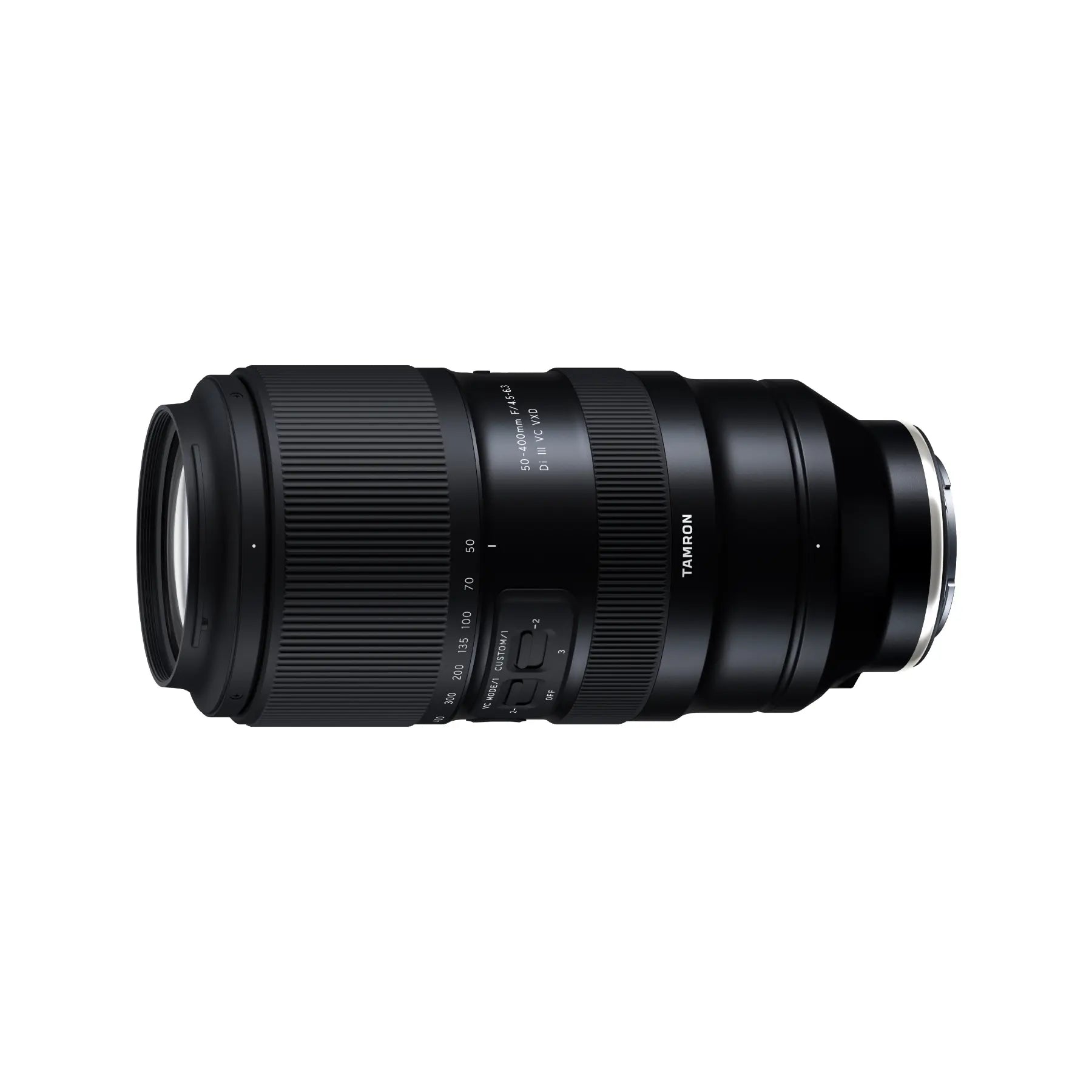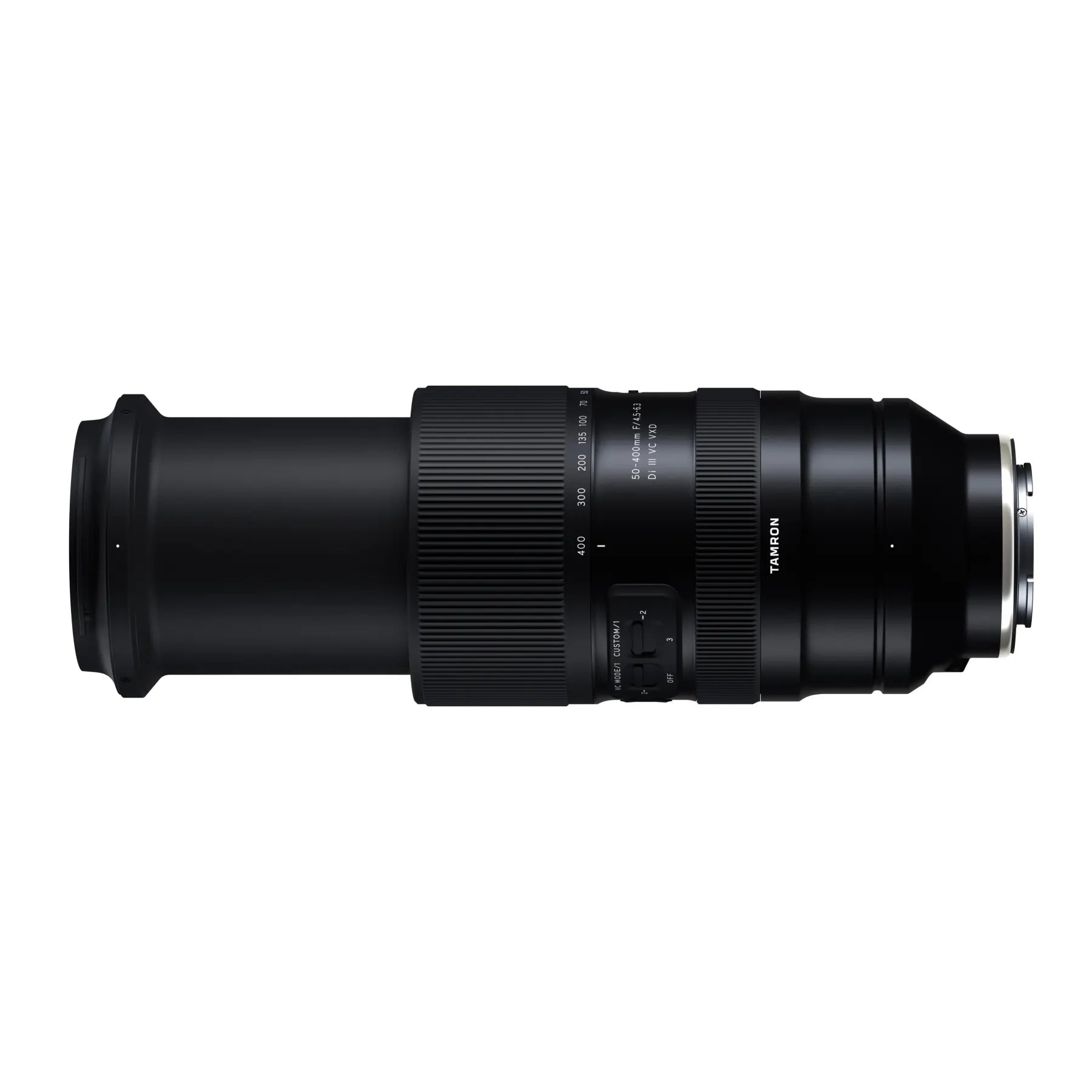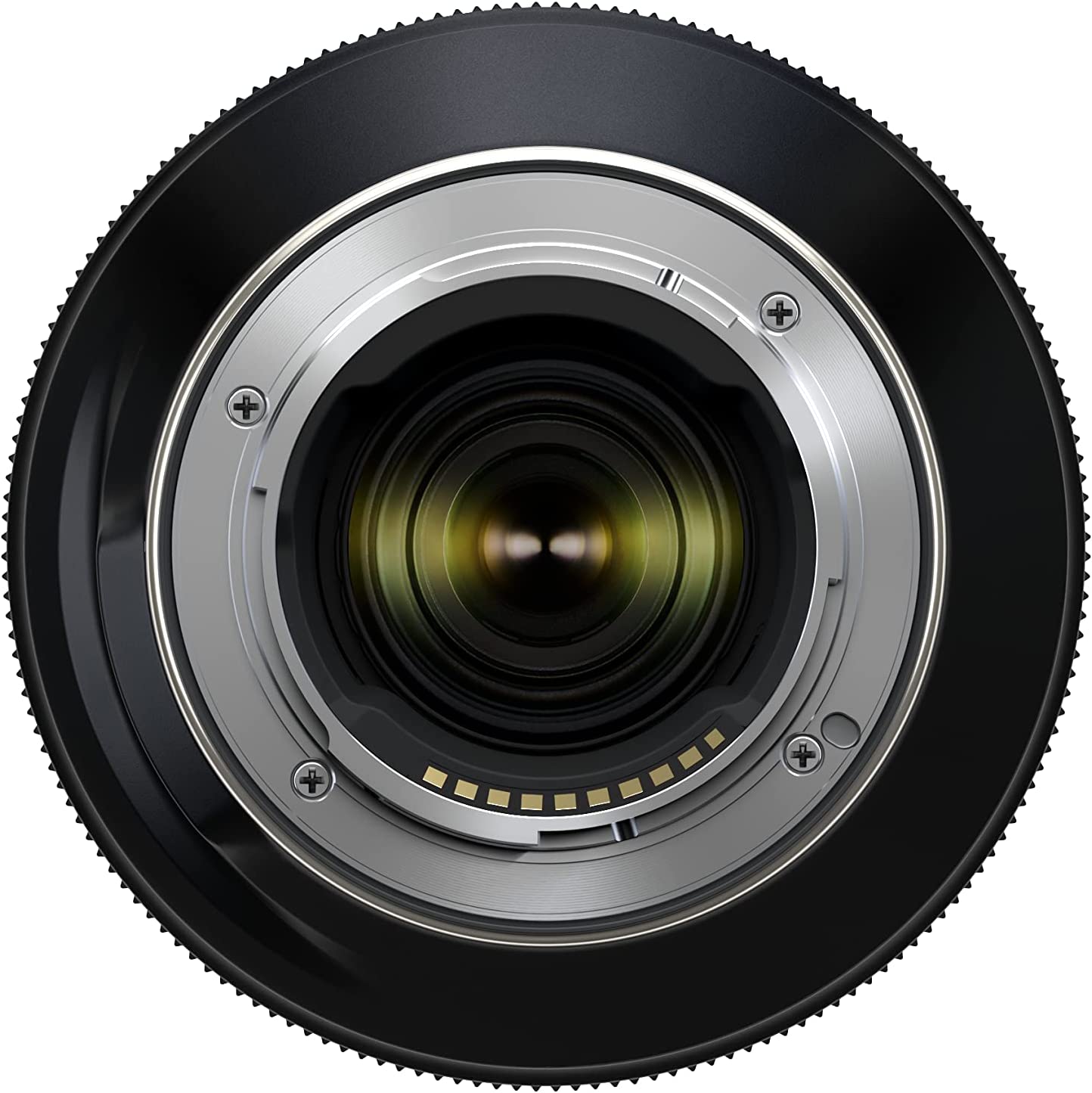Product Description
Tamron 50-400mm F/4.5-6.3 Di III VXD for Sony FE Mount
The Ultimate All-in-One Zoom Lens for Sony E-Mount Cameras
Designed to deliver unparalleled versatility, the Tamron 50-400mm F/4.5-6.3 Di III VXD is a game-changer for photographers using Sony FE mount cameras. Whether you're capturing stunning landscapes, dynamic wildlife, fast-paced sports, or even breathtaking macro shots, this ultra-telephoto zoom lens offers exceptional performance in a remarkably compact package.

Key Features at a Glance:
- E-Mount Lens/Full-Frame Format: Perfectly compatible with Sony FE mirrorless cameras for full-frame coverage.
- Impressive Zoom Range: 8x zoom ratio, spanning from standard 50mm to an impressive 400mm ultra-telephoto range.
- Close-Up Excellence: Achieve stunning 1:2 macro magnification with a minimum focus distance of just 9.8" at 50mm.
- VXD Autofocus System: Fast, quiet, and highly accurate focusing powered by Tamron's cutting-edge Voice-coil eXtreme-torque Drive (VXD) linear motor.
- VC Image Stabilisation: Steady your shots with Tamron’s advanced vibration compensation system, perfect for handheld shooting at long focal lengths.
- Weather-Sealed Design: A moisture-resistant build with a fluorine coating ensures durability and reliability in challenging environments.
- 67mm Front Filter Thread: Standardised for seamless use with other Tamron mirrorless lenses.
- Tamron Lens Utility Compatibility: Customise settings and update firmware via the USB-C port.

Compact and Portable Design
Despite its powerful 8x zoom range, the Tamron 50-400mm measures just 7.2 inches in length, comparable to conventional 100-400mm lenses. Its lightweight and portable design make it an excellent companion for travel and field photography.

Macro Performance Like No Other
The lens's macro capabilities set it apart in its class. With a minimum focus distance of 9.8 inches at the 50mm end, this lens offers up to 1:2 magnification—ideal for close-up shots of flowers, insects, or intricate details, delivering sharpness and clarity that rivals dedicated macro lenses.

Superior Autofocus and Image Stabilisation
VXD Linear Motor for Precision
The VXD autofocus system provides lightning-fast, whisper-quiet, and highly accurate focusing, ensuring optimal performance for both stills and video. This makes it ideal for tracking moving subjects in wildlife or sports photography.
VC Image Stabilisation for Steady Shots
Tamron’s VC (Vibration Compensation) system significantly reduces camera shake, enabling sharp images even at long focal lengths or slower shutter speeds. This is especially beneficial for handheld shooting.

Stay Ahead with Tamron Lens Utility
Future-proof your lens with the USB-C connector port, which allows you to:
- Update the firmware for optimal compatibility with your camera.
- Customise lens functions to suit your shooting style using the Tamron Lens Utility software.

Ergonomic and User-Friendly Design
Designed with photographers’ needs in mind, the lens offers:
- Rapid Zoom Ring: Allows quick focal length adjustments for spontaneous shots.
- Zoom Lock Switch: Prevents the lens barrel from extending during transport.
- Seamless Compatibility: Works with Sony camera-specific features like Fast Hybrid AF and Eye AF.
- Weather Protection: Fluorine-coated front element resists water, oil, and smudges, while the moisture-resistant construction ensures reliable performance in harsh conditions.
- Optional Arca-Swiss-Compatible Tripod Mount: Perfect for stable shooting when using a tripod.

Who Is This Lens For?
The Tamron 50-400mm F/4.5-6.3 Di III VXD is ideal for photographers who demand versatility without compromising on quality. Whether you’re a:
- Wildlife Photographer capturing distant animals.
- Sports Photographer tracking high-speed action.
- Travel Enthusiast seeking a lightweight all-in-one solution.
- Macro Hobbyist enjoying close-up nature shots.
This lens delivers exceptional performance across the board.
Technical Specifications
- Mount: Sony FE (Full-Frame)
- Aperture Range: f/4.5-6.3
- Minimum Focus Distance: 9.8 inches (at 50mm)
- Maximum Magnification: 1:2 (50mm)
- Filter Size: 67mm
- Dimensions: 7.2 inches in length
Why Choose the Tamron 50-400mm F/4.5-6.3 Di III VXD?
Combining an unmatched zoom range, macro capabilities, cutting-edge autofocus, and robust design, this lens is perfect for photographers seeking a versatile yet portable tool to elevate their craft.
Order Yours Today and take your photography to the next level!
Payment & Security
Your payment information is processed securely. We do not store credit card details nor have access to your credit card information.



















